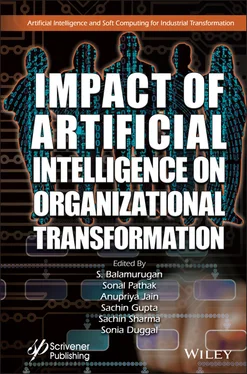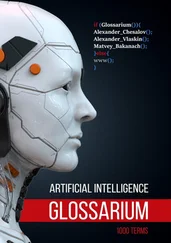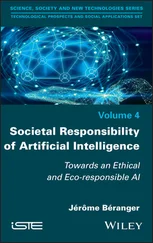In India, Algo Trading was introduced on April 3, 2008, when DMA (Direct Market Access) facility was made available to institutional clients by SEBI (Securities and Exchange Board of India). DMA facility was a platform which allowed brokers to provide their set up to clients and gave them direct right to use to the exchange trading system without any participation of a broker. To start with retail, clients were not given this facility; thus, only institutional clients could avail this service. But later, it was also given to retail-individual traders. It brought down the costs of trading for the institutional investors and also helped in improved execution by reducing the time spent in steering the order to the broker and issuing the necessary commands. But DMA had a negative effect on the brokerage business of stock brokers as investors both institutional and retail clients start accessing DMA services. To sustain the times, they started providing computerized software to the clients.
Since 1800s, Indian stock markets have come a long way from trading in the ring to complete computer-based trading to algorithmic trading. These have been years of complete change and cumulative improvement. Programs which were used by select few are now approachable to people at large creating more volumes in the exchanges every day. Markets have given confidence to the retail traders with safety measures and transparency. The future defiantly lies in more sophisticated research tools on computers more advanced and AI featured.
1. Strasburg, J. and Bray, C., Six charged in vast insider-trading ring. Wall St. J ., A1, 2009.
2. Khandelwal, A., Data Compliance in Stock Broking–Boon or Bane. Int. J. Res. Eng., IT Soc. Sci ., VI, Issue IV, 28-33, 2015.
3. Hendershott, T., Electronic trading in financial markets. IT Prof ., 4, 10–14, 2003.
4. Jennings, M., The Lessons from Galleon Hedge Fund and the Insider Trading Ring. Corp. Finance Rev ., 14, 5, 43, 2010.
5. Rahim, A., Problems and prospects of online share trading practices in India. Int. J. Marketing Financ. Serv. Manage. Res ., 2, 4, 150-155, 2013.
6. Rajendran, R. and Palanisamy, S., The History and Evolution of Indian Online Share Trading as a Technological Tool for Sustainable Wealth Creation for Individual Investors. Presented at International Conference on Innovations in Engineering and Technology for Sustainable Development , Bannari Amman Institute of Technology, 2012.
7. Khandelwal, A., E-Accounting as a Way to Maintain Financial Data with Special Reference to Indian Stock Market. Available at SSRN 2859616, Economic Challenger , 73, 77-80, 2016.
8. Kyriacou, K. and Mase, B., Rolling settlement and market liquidity. Appl. Econ ., 32, 8, 1029–1036, 2000.
9. J. Morik, C.V. Austin, E. Lunceford, B. Blank, U.S. Patent Application No. 13/894,991, 2013.
10. Amsaveni, R. and Gomathi, S., A study on satisfaction of online share traders with special reference to Coimbatore district of Tamil Nadu in India. Asia-Pac. J. Manage. Res. Innov ., 8, 2, 145–153, 2012.
11. Stout, L.A., The investor confidence game. Brook. L. Rev ., 68, 407, 2002.
12. Srivastava, S., Impact of internet growth on the online stock trading in India. Available at SSRN 1964838, 2011.
13. Barclay, M.J. and Hendershott, T., Price discovery and after trading hours. Rev. Financ. Stud ., 16, 1041–1073, 2003.
14. Hendershott, T., Jones, C.M., Menkveld, A.J., Does algorithmic trading improve liquidity? J. Finance , 66, 1, 1–33, 2011.
Email: Aditig.1986@gmail.com; aditir.khandelwal@iisuniv.ac.in
3
AI in HR a Fairy Tale of Combining People, Process, and Technology in Managing the Human Resource
Jyoti Jain1 and Sachin Gupta2*
1Department of Management, JECRC University, Jaipur, (Rajasthan), India
2Department of Business Administration, Mohanlal Sukhadia University, Udaipur (Rajasthan), India
Abstract
It is the world of magical performance with unseen possibilities. It is the time of working smart rather than working hard. It is the time when machines in collaboration with the human are working hand to hand to ease the work and hence to increase the productivity. Use of machines with human help is not a new idea or a thought, way back with the use of simple computer till Hi-Fi gadgets like laptops, and employees are rather habitual of working with machines.
The use of Artificial Intelligence is not limited to the Information Technology sector only but has laid its different wings toward the medical, education, business, automotive vehicles, etc. AI in HR has also enabled the managers to work efficiently starting from the smart people analytics to the team training and hiring; the AI in HR is also dealing with the data transactions and limiting the repetitive work and low value task.
The present chapter focuses on the use of AI in HR as AI and HR are now going together to manage the human as the resource and are enabling the organizations to help out in reducing the carbon footprint.
Keywords :Artificial intelligence, Human resource and AI, Artificial intelligence and recruitment, SMART HR, smart people analytics, machine learning “The science and engineering of making intelligent machines, especially intelligent computer programs”—According to the father of Artificial Intelligence, John McCarthy [1]
It seems like the world of fairy tales where the works are done with a whirl of wand or rather via click on fairies like smart machines. It is the world of magical performance with unseen possibilities. It is the time of working smart rather than working hard. It is the time when machines in collaboration with the human are working hand to hand to ease the work and hence to increase the productivity. Use of machines with human help is not a new idea or a thought, way back with the use of simple computer till Hi-Fi gadgets like laptops, and employees are rather habitual of working with machines. But as a limit, machines can only provide the clerical assistance or do the work related with documentation, writing or securing the data. To make even this possible and to prove that sky is not the limit, the concept of AI is slowly creeping in to HR.
In the midst of the upcoming technologies, Artificial Intelligence (AI) is the new dimension which could be better defined as the Processing Human Intelligence by Advanced Machines. In the age of new advanced computers, the world has changed drastically. Now, it is not only the money and the management required to run the organization successfully, but the combination of people, process, and performance with the use of technology has become the essential ingredients of successful business recipe.
The use of AI is not limited to the Information Technology sector only but has laid its different wings toward the medical, education, business, automotive vehicles, etc. Customer is the king always, and keeping that fact in mind, the AI has also helped the businesses to enrich its CRM to serve the customer better by going through its past shopping history and serving the best at its end. It has also enabled the HR to reduce its task repetition and by saving the data on the cloud for the future use and security.
AI in HR has also enabled the managers to work efficiently by starting from the smart people analytics to the team training and hiring, the AI in HR also dealing with the data transactions and limiting the repetitive work and low value task.
Present chapter focuses on the use of AI in HR as AI and HR are now going together to manage the human as the resource and are enabling the organizations to help out in reducing the carbon footprint.
Читать дальше












